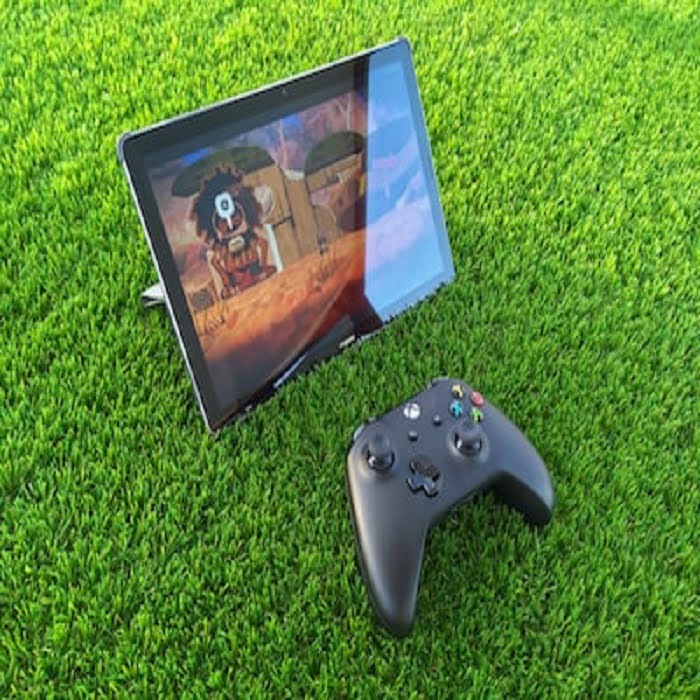
When it comes to personalizing your Mac desktop, Apple’s macOS offers several customization options, including adding widgets to your desktop. Widgets are small, interactive applications that provide at-a-glance information and quick access to various functions, making your desktop more functional and tailored to your needs.
In this comprehensive guide, we’ll explore three ways to add widgets to your Mac desktop running macOS Sonoma and versions below. Whether you’re looking to enhance your productivity, stay updated with important information, or simply want to add a touch of personalization to your desktop, we’ve got you covered.
Understanding Widgets in macOS
Before we dive into the methods of adding widgets to your Mac desktop, let’s take a moment to understand what widgets are and why they’re valuable.
Definition and Purpose of Widgets
Widgets are small, self-contained applications that provide specific pieces of information or functionality right on your desktop. They offer a convenient way to access weather forecasts, calendar events, stock prices, news headlines, and more without opening full-sized applications. Widgets are designed to keep you informed and save you time.

Types of Widgets Available in macOS
macOS offers a variety of built-in widgets that cover a wide range of functions. Some common types of widgets include:
- Weather Widgets: Display current weather conditions, forecasts, and more.
- Calendar Widgets: Show your upcoming events and appointments.
- Stock Widgets: Keep you updated on stock market information.
- News Widgets: Display the latest news headlines and stories.
- Calculator Widgets: Offer a quick calculator for performing calculations without opening the Calculator app.
- Battery Widgets: Show the battery status of your Mac and connected devices.
- World Clock Widgets: Display the time in various cities around the world.
These widgets are just a few examples of what macOS has to offer, and there are many more available, both built-in and through third-party sources.
Benefits of Using Widgets on Mac Desktop
Now that you know what widgets are, let’s explore the benefits of adding widgets to your Mac desktop:
- Efficiency: Widgets provide quick access to important information and functions, reducing the need to open full applications.
- Customization: You can choose the widgets that best suit your needs and arrange them on your desktop for a personalized experience.
- Information at a Glance: Widgets offer real-time data, ensuring you stay updated on weather, news, and other important information.
- Enhanced Productivity: Widgets can help you manage your schedule, track stocks, and perform calculations without interrupting your workflow.
- Minimalist Desktop: Widgets help keep your desktop clean and organized by consolidating essential information in one place.
Now that you understand the value of widgets, let’s explore the three methods to add widgets to your Mac desktop.
Method 1: Using Dashboard Widgets
Dashboard widgets are small applications that run in a separate layer on your desktop, providing quick access to various tools and information. Although Dashboard was less prominent in recent macOS versions, it is still available for those who prefer this classic method of adding widgets.
Steps to Access and Add Dashboard Widgets in macOS Sonoma and Below
- Open Dashboard: To access Dashboard, press the F12 key on your keyboard or use a gesture if you have a trackpad with multi-touch capabilities.
- Add Widgets: Once Dashboard is open, you can add widgets by clicking the “+” button at the bottom left corner of the screen. This will reveal a selection of available widgets.
- Select and Customize: Choose the widgets you want to add by clicking on them. You can also customize widget settings, such as location or content, if applicable.
- Arrange Widgets: To arrange widgets on your desktop, click and drag them to your desired location. You can also adjust the order of widgets by dragging them up or down.
- Exit Dashboard: When you’re done, press the “X” button at the top left corner of the screen to exit Dashboard.
Popular Dashboard Widgets and Their Features
Dashboard widgets come in various categories, and some of the popular ones include:
- Weather Widget: Provides current weather conditions, forecasts, and even animated weather maps.
- Calculator Widget: Offers a basic calculator for performing calculations quickly.
- Stocks Widget: Keeps you updated on stock market data and price changes.
- World Clock Widget: Displays the time in multiple cities around the world.
- Calendar Widget: Shows your upcoming events and appointments.
Dashboard widgets are a classic and straightforward way to add functionality to your Mac desktop, but there are other methods to explore as well.
Method 2: Using Third-Party Widget Apps
While macOS provides a range of built-in widgets, you can expand your widget collection by using third-party widget apps. These apps often offer specialized widgets for specific tasks and can be an excellent way to personalize your desktop even further.
Steps to Download, Install, and Use Third-Party Widget Apps in macOS
- Search the App Store: Open the App Store on your Mac and search for “widget apps” or specify the type of widget you’re looking for (e.g., weather widget, calendar widget).
- Choose a Widget App: Browse the available widget apps and read reviews to find one that suits your needs. Click on the app to learn more about its features.
- Download and Install: Once you’ve selected a widget app, click the “Get” or “Install” button to download and install it on your Mac.
- Access Widgets: After installation, open the widget app. Most third-party widget apps will provide instructions on how to access and add their widgets to your desktop.
- Customize and Arrange: Customize the widgets as per your preferences. You can often adjust settings, choose themes, and arrange widgets on your desktop.
Recommended Third-Party Widget Apps for Mac Desktop Customization
Here are some popular third-party widget apps for Mac desktop customization:
- Widgetsmith: A versatile widget app that allows you to create and customize widgets for various purposes, including weather, calendar, photos, and more.
- AnyBar: A simple, customizable app that adds colored dots to your menu bar, allowing you to quickly check the status of various tasks or events.
- BeWeather: A weather widget app that provides detailed weather forecasts and information, including radar maps and severe weather alerts.
- iStat Menus: While not strictly widgets, iStat Menus offers customizable system monitoring tools that you can add to your menu bar for real-time information on CPU, memory, network, and more.
- Fantastical: A powerful calendar app that comes with its own set of widgets for tracking and managing your schedule.
Using third-party widget apps opens up a world of possibilities for customizing your Mac desktop to match your specific needs and preferences.
Method 3: Using macOS System Preferences
Another way to add widgets to your Mac desktop is by using macOS System Preferences. This method is especially useful for customizing widgets that provide system-related information and quick access to settings.
Introduction to System Preferences and Desktop Customization Options
System Preferences is a central location for customizing various aspects of your Mac’s operating system. It allows you to adjust system settings, configure hardware preferences, and manage user accounts. Within System Preferences, you can find options for desktop customization, including widgets.
Steps to Add Widgets Using macOS System Preferences
- Open System Preferences: Click on the Apple menu in the top-left corner of your screen and select “System Preferences” from the dropdown menu.
- Choose Desktop & Screen Saver: Within System Preferences, click on “Desktop & Screen Saver” to access customization options.
- Select Widgets: In the Desktop & Screen Saver window, click on the “Widgets” tab. Here, you can see the available widgets that can be added to your desktop.
- Add Widgets: To add a widget, simply drag and drop it onto your desktop. You can add multiple widgets and arrange them as desired.
- Customize Widget Settings: Some widgets may offer customization options. Right-click or control-click on a widget to access its settings and adjust parameters such as location, appearance, or content.
Customization Features Available Through macOS System Preferences
macOS System Preferences offer a range of customization features, allowing you to tailor widgets and desktop elements to your liking:
- Widget Selection: Choose from a variety of built-in widgets, including weather, calendar, clock, and more.
- Desktop Background: Customize your desktop background by selecting from Apple’s default wallpapers or using your own photos and images.
- Screen Saver Options: Access additional screen saver options, including photo albums, animated scenes, and more.
- Arrangement: Arrange widgets freely on your desktop. You can overlap widgets, place them in corners, or organize them in a grid layout.
- Transparency: Adjust the transparency of widgets to create a visually appealing desktop setup.
Tips for Effective Widget Usage
Now that you know how to add widgets to your Mac desktop using different methods, here are some tips to make the most out of your widget experience:
1. Organizing Widgets for a Cleaner Desktop
While widgets provide valuable information, too many of them can clutter your desktop. Organize widgets into groups based on their functions. For example, place weather-related widgets together and group productivity widgets separately. This organization makes it easier to find the information you need at a glance.
2. Managing Widget Preferences and Updates
Regularly check widget preferences to ensure they are displaying the information you want. Some widgets offer settings like location, time format, and appearance themes. Additionally, keep your widgets up-to-date by installing updates from the App Store. Developers often release updates to improve functionality and add new features.
3. Avoiding Overcrowding: Selecting Widgets Wisely for Enhanced Productivity
While widgets are incredibly useful, avoid overloading your desktop with unnecessary ones. Choose widgets that align with your daily activities and priorities. For instance, if you’re a stock trader, stock market widgets might be essential. If you’re a frequent traveler, world clock and weather widgets could be invaluable. By selecting widgets wisely, you enhance your productivity and make your desktop experience more efficient.
In conclusion, adding widgets to your Mac desktop in macOS Sonoma and versions below is a fantastic way to enhance functionality, stay organized, and personalize your computing experience. Whether you prefer the classic Dashboard widgets, explore third-party widget apps, or utilize macOS System Preferences, the choice is yours. By following the steps outlined in this guide and implementing the tips provided, you can create a desktop setup that caters to your unique needs and preferences.
So, why wait? Start customizing your Mac desktop today and unlock the full potential of widgets, transforming your desktop into an informative, efficient, and visually appealing workspace.






![How to Split Screen on Chromebook [3 Easy Ways]](https://mp3ovi.com/wp-content/uploads/2023/10/How-to-Split-Screen-on-Chromebook-3-Easy-Ways.jpg)
